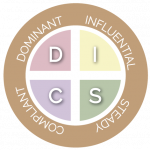How human differences can affect communication success
“The effectiveness of communication is not defined by the communication, but by the response”
Milton H Erikson – American Psychologist
Imagine your business is a theatre production. You’re the Director; you have your cast, scripts being written and costumes under design. You’ve got the makings of a great production, right? Or have you? Consider for a moment your own team. Do they communicate effectively? Are they performing above expectation? If so, fantastic!
If, however, you have now realised that some of your writers are not meeting their deadlines, your costume department is bickering about characterisation and one cast member has had a meltdown at the idea of being a donkey’s derrière then you are in the majority.
So what has caused this unfathomable discord within your production? Human differences. Not just differences in who we are but how we communicate with others, but also how we like to communicate and how we prefer to be communicated with. To quote poet John Lydgate:
“You can please some of the people all of the time, you can please all of the people some of the time but you cannot please all of the people all of the time”.
Or can we? If you were to exchange the word ‘please’ for ‘communicate with’ how does this alter the message? Significantly. We can communicate with all of the people all of the time but, it is the effectiveness of that communication which determines how and how well people respond to your message. So, how are you going to effectively communicate to that actor that you need him to put on his hindquarters in a such way that he does so, and willingly?

This is where the DISC Profiling Method (DPM) can be your greatest ally. DISC is a human behaviour profiling system founded by William Moulton Marsten, psychologist and creator of (random fact of the day) DC Comics’ Wonder Woman! DISC profiling accommodates myriad benefits, but one of the most common uses of DISC is for improving team communication. DISC stands for the four main quadrants of human behaviour styles:

D – DOMINANCE
I – INFLUENCE
S – STEADINESS
C – COMPLIANCE
These are not rigid quadrants, of which we all fit into one. We are multi-faceted creatures and most of us are a blend of each quadrant, which combine in such a way as to assign us to one of over 25 possible human behaviour styles. The DPM isn’t about pigeonholing people. It’s about establishing communication preferences: how people act and react to what is being asked of them.
You’ve probably heard the phrase, “There is more than one way to skin a cat”. It’s the same with communication: there‘s more than one way to ask the same thing to acquire the desired result. By profiling yourself and your team, you can identify your own cast and crew’s communication preferences and adapt your own communication style to meet theirs. It’s a simple yet highly effective way to get the best out of people without them feeling disempowered. By profiling your team using DISC you can bet the lint in your trouser pocket that there will be less conflict and that seemingly formidable actor will be gracing the stage… tail and all.
To find out more about how DISC can benefit you and your team, please email: samantha@elysium-therapies.co.uk or visit https://www.linkedin.com/in/samantha-lynne-8ab62526/
Author:
 Samantha Lynne is a Certified DISC Consultant, Soul Purpose Coach and Onsite Health Practitioner. Her love of people and human behaviour has brought her to the world of personal and corporate coaching . Helping people to learn more about themselves and their teams through DISC profiling whilst working to achieve their life purpose through personal empowerment.
Samantha Lynne is a Certified DISC Consultant, Soul Purpose Coach and Onsite Health Practitioner. Her love of people and human behaviour has brought her to the world of personal and corporate coaching . Helping people to learn more about themselves and their teams through DISC profiling whilst working to achieve their life purpose through personal empowerment.
 Samantha Lynne is a Certified DISC Consultant, Soul Purpose Coach and Onsite Health Practitioner. Her love of people and human behaviour has brought her to the world of personal and corporate coaching . Helping people to learn more about themselves and their teams through DISC profiling whilst working to achieve their life purpose through personal empowerment.
Samantha Lynne is a Certified DISC Consultant, Soul Purpose Coach and Onsite Health Practitioner. Her love of people and human behaviour has brought her to the world of personal and corporate coaching . Helping people to learn more about themselves and their teams through DISC profiling whilst working to achieve their life purpose through personal empowerment.
